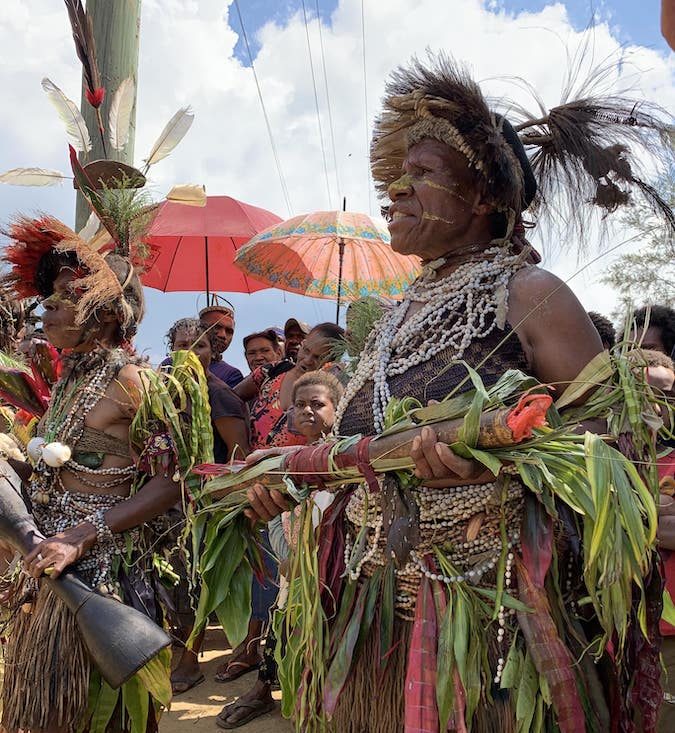Timuza is produced by a group of certified farmers within the Timuza/Namura cooperative, with New Guinea Highlands Coffee Exports (NGHCE), InterAmerican’s sister company in Papua New Guinea.
The group consists of 207 coffee families, who together farm 274 hectares. The soil is loamy and rich with volcanic ash, the weather is hot and wet year round, and the coffee is shaded by Casuarina (a weepy evergreen), Albizia (also known as silk trees), Schzomeria (used for the interior of the Sydney Opera House) and Stemona (a family of vines).
Coffee was established here in the 1930s, though commercial production dates to post World War II. The first plants were brought in by Lutheran missionaries, for their own consumption, and are said to be decedents of Blue Mountain plants.
NGHCE regularly works with these producers on improving plant husbandry and post-harvest processes for quality, as well as in financial planning and social programs such as gender awareness and HIV/AIDS prevention. The co-op is also audited for its Organic certification each spring.
The coffee is hand picked, hand pulped, washed in clean river water, dried in the sun and delivered as parchment to the receiving station, where it’s machine hulled and polished.
The receiving station also has its own tiny warehouse. Because producers will travel quite a distance to deliver to the co-op, which appreciates and pays a premium for quality, it’s building a little sleeping loft in a corner of the warehouse, so that producers who arrive late can stay the night before returning home.
Timuza Receiving Station
In July, InterAmerican SVP Kayd Whalen visited the NGHCE quality lab and found the Timuza lot—with its creamy body and sweet, tropical notes—to be an absolute stand-out on the cupping table. Later in the trip, when she visited the co-op, she saw that the coffee was dried on raised beds—some of the only raised beds she saw anywhere in PNG.
“The co-op members surprised us with a beautiful presentation, in full ceremonial outfits—there were more than 100 children and adults singing and playing instruments and leading us to the coffee receiving station. And the children presented us with beautiful bilums—traditional, handwoven natural-fiber bags that the women use to carry everything from vegetables to babies. They were so warm and enthusiastic—my heart was exploding with gratitude!” Kayd shared later.
“It couldn’t have been more exciting that these incredible people were responsible for the coffee that had been my favorite on that morning’s cupping table! I’m so thrilled that we were able to purchase this coffee, that more people can experience the cooperative’s work—and that I get to re-enjoy that ceremony with each cup!
Cupping notes: Fruit punch, kumquat, raspberry, savory; creamy body, juicy acidity.




